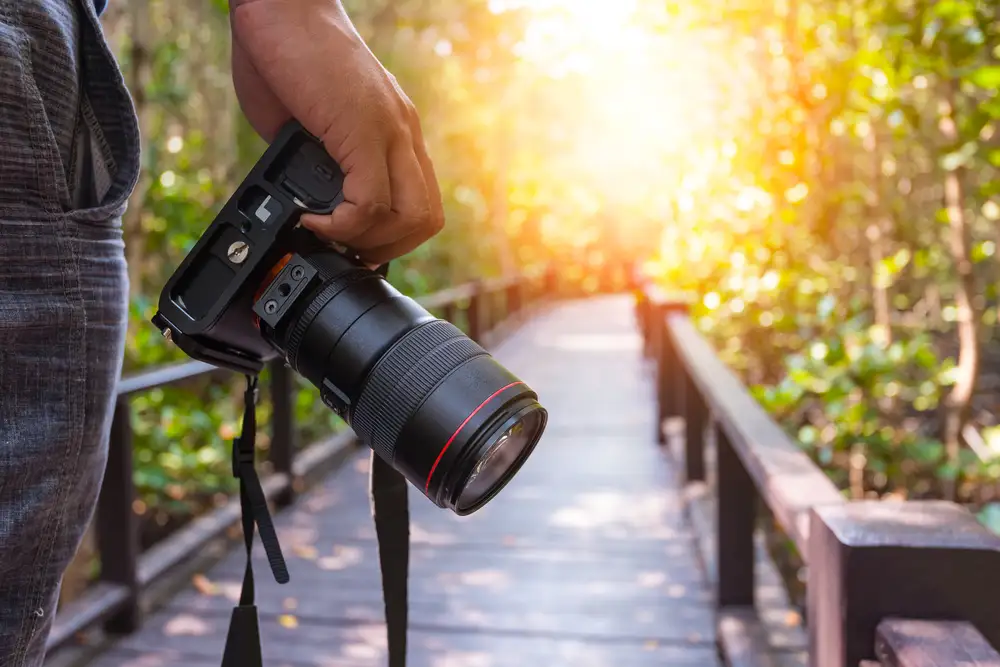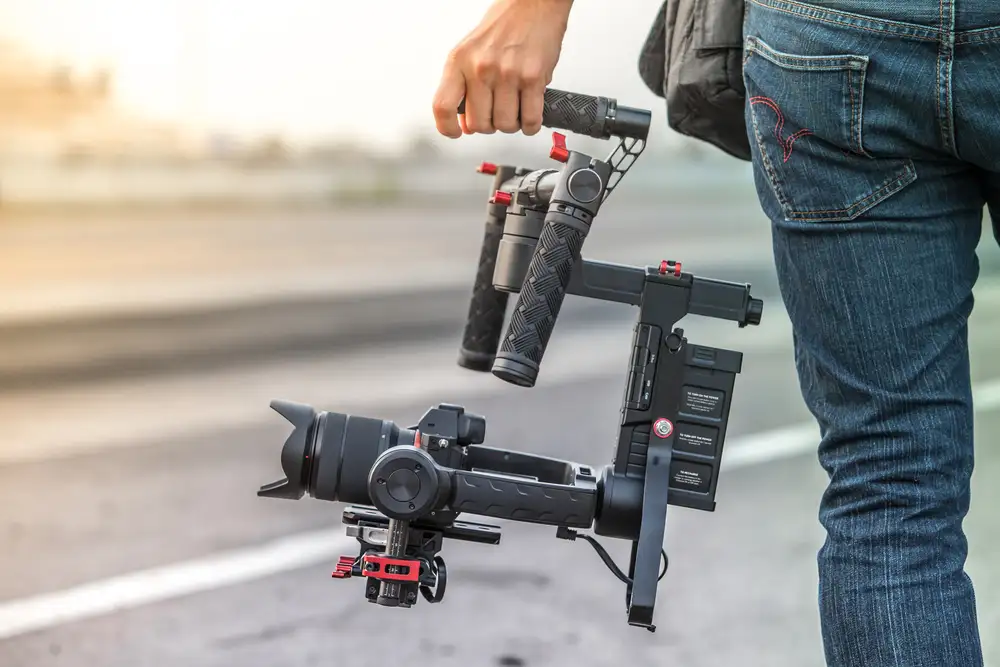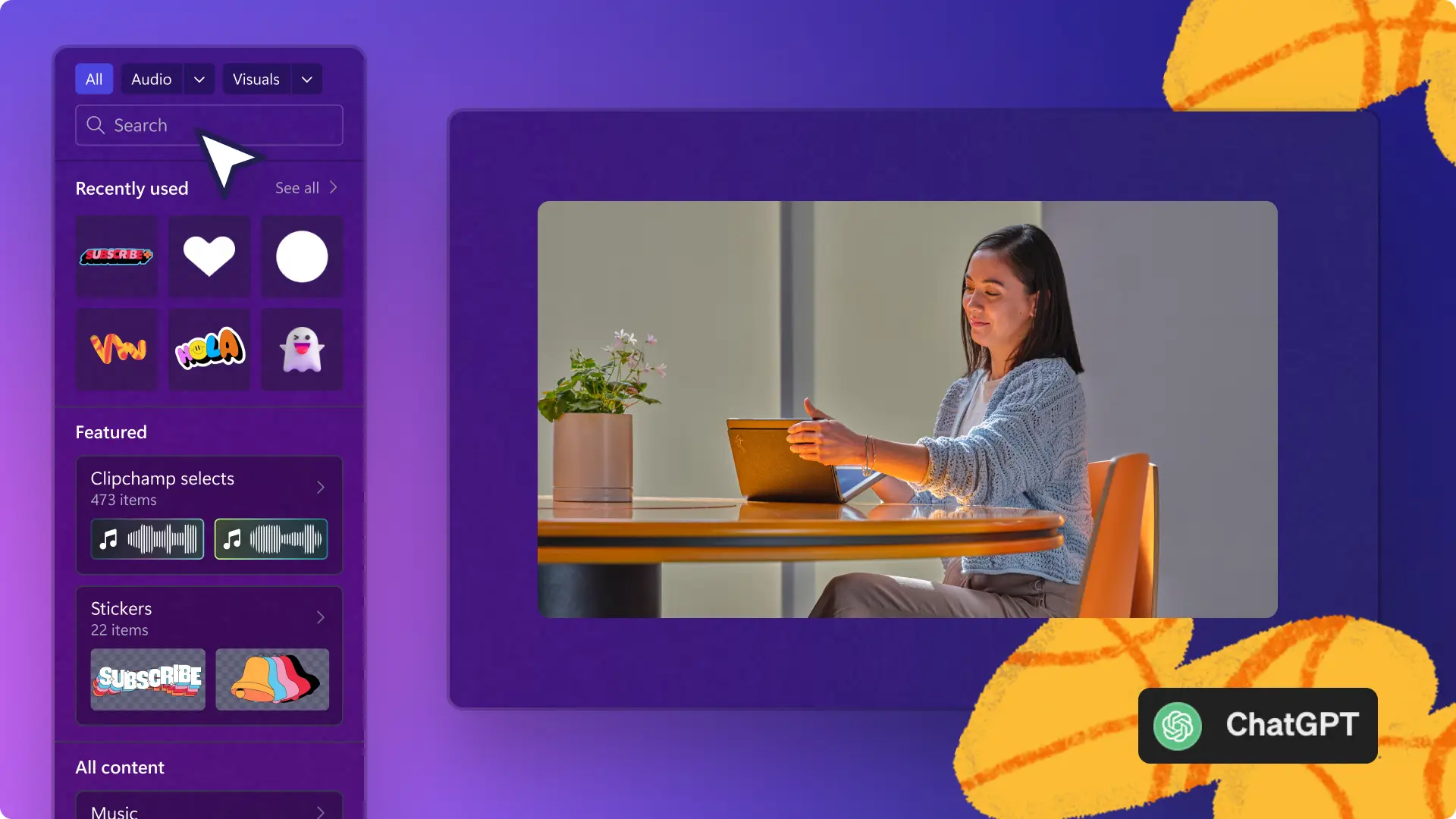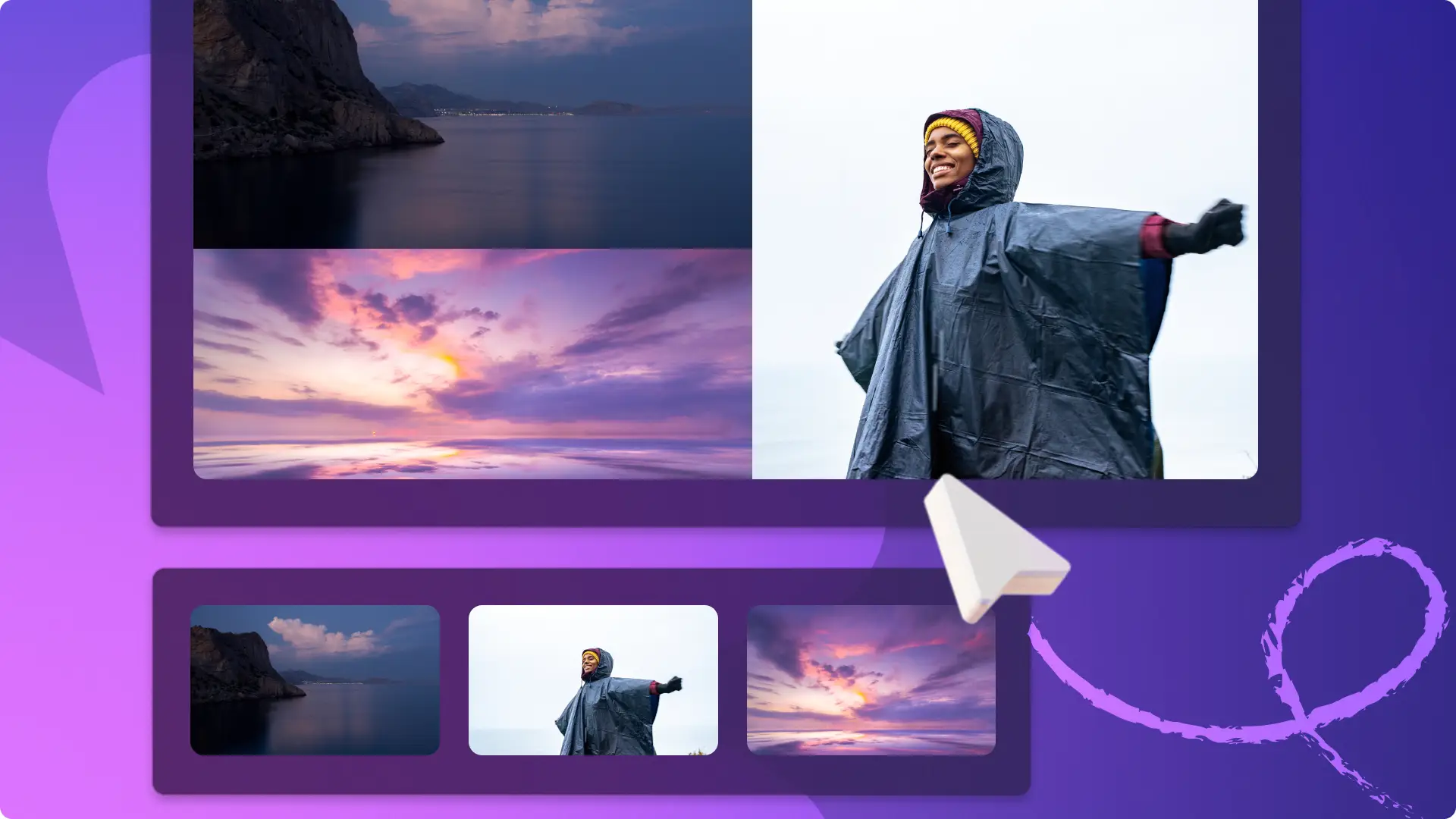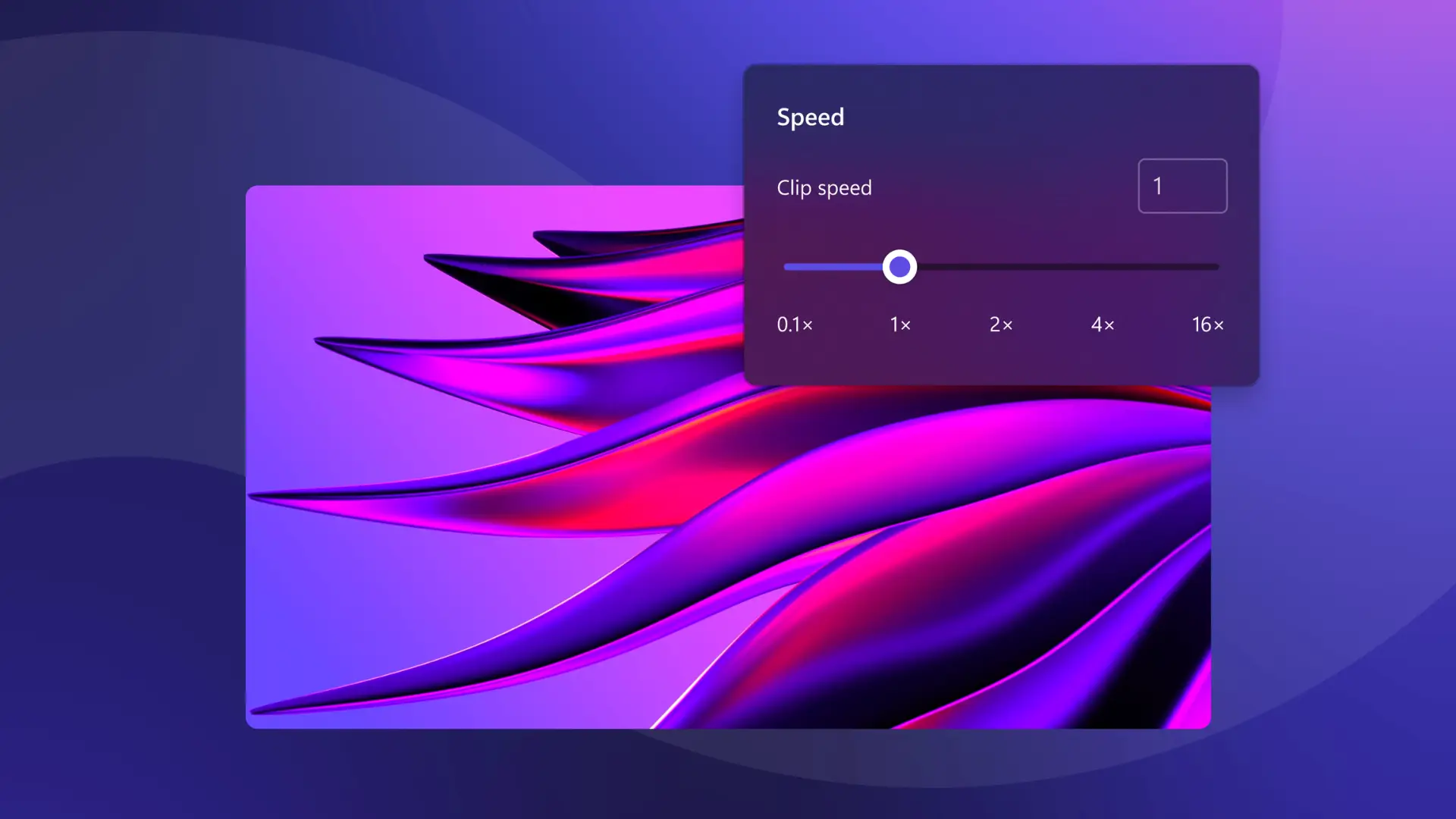Heads up! The screenshots in this article are from Clipchamp for personal accounts. The same principles apply to Clipchamp for work and school accounts.
On this page
What’s the secret sauce to good video? B-ROLL, baby! All those dreamy sunrises and sunsets, and pivotal close-ups… B roll. When creating a video, it’s all about the ‘show don’t tell’—seeing the same shot without variation is boring—B roll brings your video editing to life!
In this ultimate guide to B roll, we’ll cover the ins and outs of B roll, answer all those burning B roll questions and share tips on how various B roll can help turn business video ideas from snoozetown to cinematic masterpiece!
What is B roll?
The terms A-roll and B-roll were dubbed back in the early days of Hollywood films.
B roll, B-roll, B-reel or Broll footage is essentially any video footage in addition to primary footage (also known as your A-roll), which usually features the subject. Anytime you’re watching a film, documentary or even a video ad—the footage that isn’t a ‘talking head’—that’s B roll. For example, a flashback to the past or a cut to a mouthwatering cheesy slice of pie in a pizza ad. Don’t forget the news—it heavily utilizes B roll to help give context to what’s being reported on.
Why does B roll matter?
When putting together any video, it’s just as essential to have B roll to complement your footage. Think of your B roll as an archive of back-up footage—this footage can be used for filler and transitional cuts. Capturing B roll is often done on a separate camera during the filming process, but it can also easily be sourced through stock footage libraries too.
What are the benefits of shooting B roll?
For businesses, B roll can help tell your story, and make your videos more cinematic! Whether you’re a vlogger or a business with a solid video strategy (which should be every business!), with just a few extra video transitions, you can level up the quality of your video editing.
B roll provides imagery and cutaway shots to help set the scene or segway between two different shot locations. That is, these are shots that "cut away" from the main action to another shot that adds visual information, and then returns to the original shot with added meaning. Example of cutaway shots that might use B roll:
B roll helps adding a mood to a location—like showing rainy weather can imply a gloomy or sad day.
B roll helps cover any gaps or errors in your A roll. It can help gloss over gaps or errors in your A roll—for example, during an interview, the subject fumbles over a few words—you could cut the mistake out and cover it with B roll.
Is B roll like an intro video?
Well, yes, in fact B roll can be your intro video. Because B roll can be a great way to help set a scene, it can be used for a cinematic intro to your video. But it’s also so much more, here’s some perfect B roll examples:
B roll sets the scene for iconic TV moments, like here in Seinfeld where B roll like establishing location shots are used multiple times in every episode. Youtube 02
And some TV shows are pretty much built on B roll, we’re looking at you, reality TV. Youtube 03
Is the star of every wedding video the happy couple or the B roll? Take a look! Youtube 04
You get the picture now, right?
How to plan B roll
It’s fascinating to learn that our favorite films and TV shows aren’t shot in a linear fashion… it all comes down to delicate pre production planning and post production editing.
The same goes for B roll.
Just like any script or storyboard you’d create for your video, consider how and when you’re shooting the B roll while also shooting your main content.
While you want your B roll to be like a second lens to what’s going on in the scene, don’t go too crazy shooting just any and everything. It’s better to have more B roll than less, but you don’t want to end up wasting time and money on footage that’s not part of the narrative. So, plan well and shoot as much as you can keeping in mind you’ll need to organise your B roll afterwards!
Think about the location—what are all the scenes you need to shoot while you’re there? You’ll need establishing shots to help set the scene, and a number of candid shots for good measure. For example, a pan across the beach as well as close ups of the waves crashing onto the shore and a shot of that lighthouse in the distance.
If you have actors, plan out all the scenes you’ll need them to appear and arrange all the necessary wardrobes and props and take all the footage on one day rather than over the course of several short shoots.
What props or items are necessary to capture to tie your story together? For example, do you need a close up of a street sign or a text message appearing on a cell phone?
Tip: Shoot more than you need, but make sure there’s variety, consistency and focus!
Variety - get as many perspectives of a location as you can—take a range of tight and wide-angle shots.
Consistency - if you’re shooting a person walking down the street, make sure they’re walking in the same direction, keeping either left or right. Same goes to weather, if you’re shooting a scene outdoors you’ll need to consider the natural lighting for consecutive scenes.
Focus - Keep your eye on the prize. While your B roll is often what’s going on in the background or in the tandem with the main story, it still needs to tie together so don’t let your B roll get lost in the crowd. For example, if the main character is walking down the street, you want to capture the scene while focusing on your subject to help the viewers follow along.
How to shoot B roll
You can shoot B roll footage on anything from a handy smartphone to a professional digital movie camera to drones, gimbals and GoPros!
What can help you get unique angles and add cinematic value to your video is to have fun with shooting B roll by using tricks and tools of the trade to help you capture quality, smooth movement and a variety of perspectives.
Wide-angle shots establish a setting and help place the viewer firmly in the scene
Medium shots show a portrait of the subject from a medium or ‘waist high’ distance
Close-up shots show details and can help point out something key to the viewer
Shoot a range of frames per second - 120 frames a second will allow you to play around with slow motion effects in post production
Tip: if you’re shooting a close-up of an important document or old photograph, try the ‘Ken Burns Effect’ of shooting close-ups, pans, and tilts to add movement to still imagery.
How to organise B roll
“It’s here somewhere” is not what you want to be saying while scrubbing through or playing hours of B roll footage. Do the work now and Future You will thank you. Here are some tips for your post production process:
Label your files by shot type, such as wide or close up;
Sort by types of video environment - outdoors footage can be categorized by ‘beach’, ‘mountain’, ‘city’;
Categorizing by weather and seasons can be handy too, such as rainy, sunny, autumn.
How long should B roll clips be?
This requires a two-pronged response.
Firstly, one of the biggest mistakes you can make when shooting B roll is not holding a shot long enough, a good B roll shot should be a minimum of 10-15 seconds long for short videos, around a minute for slower-paced or feature film-like videos.
How much B roll should you shoot? That depends on the length and detail of the video you’re making.
A good rule of thumb: shoot enough B-roll to cover four to six times the final video length. For example, if your finished interview is one minute then you should shoot 4-6 minutes of B roll to complement that interview. It won’t all be used, but it’s all about having options!
Tips to edit B roll well
B roll is like a bandaid in your editing process. We mentioned earlier how it’s great for cutaways and to help hide errors in the A roll… it’s also handy to correct the pace of your video.
Use B roll footage to help transition in and out of the primary footage, making those scene transitions more engaging and slowing down (or speeding up) the pacing of your video.
Use B roll footage as an overlay to not just tell, but show a story.
Who doesn’t love a montage or a video slideshow? Use your B roll to create visuals that help tell your story and establish the tone.
There’s more video editing lingo and how to create video transition effects for YouTube and Facebook on our blog.
How to choose the right music for B roll
Because B roll might not have sound, you can choose to overlay the music you want to achieve the feeling you’re after! High energy car chase scene? Something upbeat to intensify the adrenaline. Relaxing bubble bath? Pick something ambient. Check out our guide on the Best Background Music for Videos!
So now you know how the secret sauce is made, make your quest for ultimate B roll even easier with a helping hand from Clipchamp. Maybe you’ve got a customer testimonial video, or some great video ideas up your sleeve? Our stock footage library can give your video transitions the vibe you’re looking for, or help create a range of emotive montages. Sign up today and start building up your B roll!
